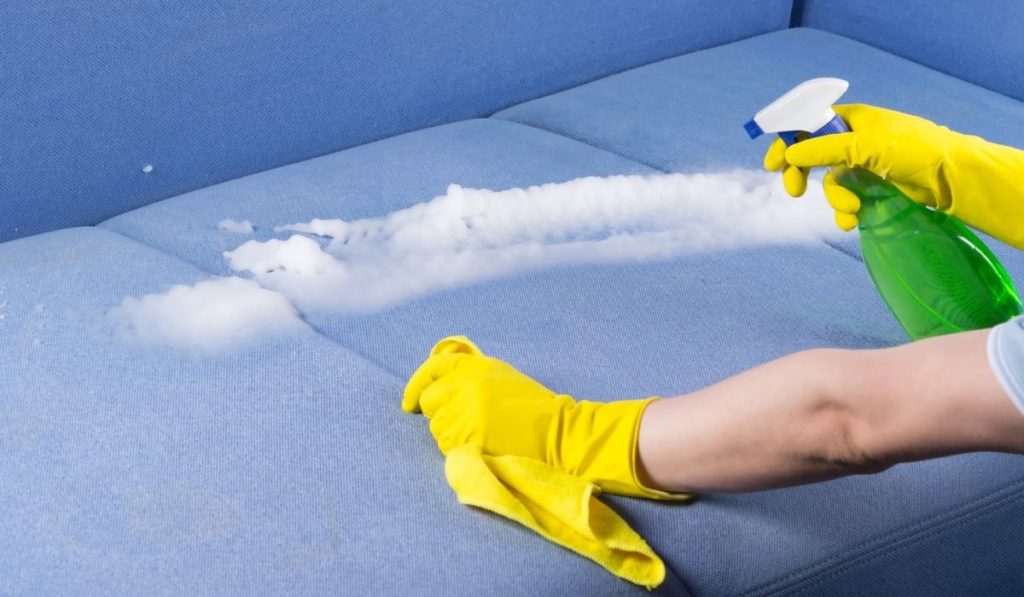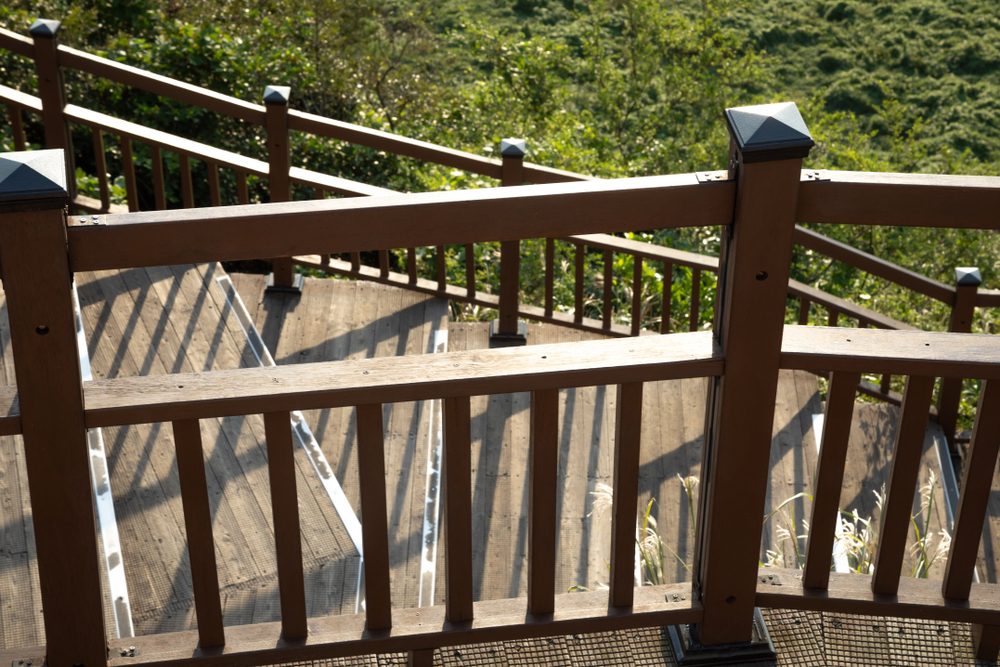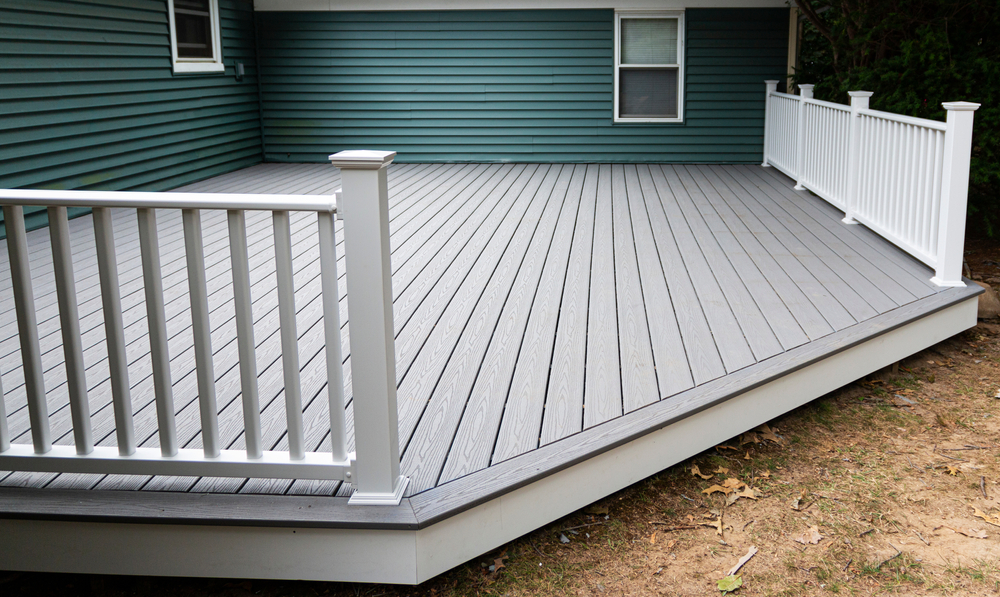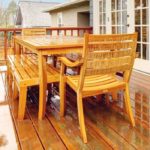Imagine you’re hosting an outdoor barbeque with your latest outdoor furniture set. Everything is going well – the drinks are flowing, everyone’s laughing, then- BOOM! Your least favorite aunt has spilled red wine all over your new ottoman. Whether it’s red wine or rain, there has to be a way to fix water-damaged cushions, right?
In some cases, you can fix and reverse water damage to outdoor cushions. Moisture damage like faded colors, mold/mildew growth, and general deterioration can be managed periodic cleaning and storing or covering cushions when not in use. When cushions get wet, dry them as quickly as possible.
You won’t have to throw out your outdoor cushions after one night in the rain as long as you know how to dry and preserve them. There are many ways to clean damaged cushions and prevent further complications. Read on for everything you need to know about water-damaged cushions and waterproofing tips!
How Water Damages Cushions and Furniture

Moisture damage is one of the number one enemies to outdoor cushions, upholstery, and furniture. Moisture damage can cause your outdoor furniture to start rotting, molding, and developing mildew.
Wood Rot
Too much exposure to moisture can cause the unprotected wooden furniture to rot. Lingering moisture seeps into the wood, causing harmful fungi to grow and the wood fibers to deteriorate. If left untreated, wood rot can completely destroy your patio furniture.
Mold & Mildew
Mold and mildew can grow just about anywhere and on anything. These types of fungi vary, but they love moist and wet conditions. If you live in an especially wet or humid climate, your outdoor cushions and furniture can be at risk.
Mold and mildew can cause your outdoor furniture to smell, develop stains, start to discolor, and even degrade. If left untreated, mold and mildew can spread through their spores, potentially damaging the rest of your patio and home.
How to Dry Outdoor Cushions
If you accidentally left your cushions out in the rain, don’t throw them out or donate them just yet. Properly drying outdoor cushions takes a little bit of time, effort, and consideration, but ultimately it’s not hard stuff!
Wring Out Your Cushions In The Bathtub
One way you can dry your outdoor cushions is by wringing them out in your bathtub or sink. First, place your cushions and upholstery in an empty bathtub. Place a heavy-duty on top of your cushions and begin pressing down on the towel to wring out the excess water.
Flip your cushion over and repeat these steps as many times as necessary. Don’t be afraid to use multiple towels. After you’ve successfully wrung out the excess water, you can place them on a clean towel to dry.
Dry Your Cushions Using Towels
You can use several dry and clean towels to remove excess water from your cushions. This method is similar to the one above but works better for cushions that aren’t as wet. To begin, place a few clean towels on the ground of your bathroom.
Next, place your damp cushion on top of the towels, folding them over the cushion. Apply pressure to your towel-wrapped cushion, wringing out the excess water. Repeat this process as much as a necessary per cushion.
Air Dry Your Cushions Outside
You may be hesitant to trust the natural elements after they’ve caused moisture damage. However, using Mother Nature and the sun to dry your cushions is incredibly effective. If you have the space outdoors, prop or hang your damp cushions in a well-ventilated area.
Keep your upholstery out of the direct sunlight, as the harsh UV rays can cause your material to fade and deteriorate. Be sure to flip your cushions over every few hours to ensure they’re getting even coverage.
Can You Reverse Water Damage to Your Outdoor Cushions?
In extreme cases, you won’t be able to reverse the effects of water damage caused to your outdoor furniture. Sometimes, the mold and mildew cause fabrics to fade, deteriorate or become unusable.
What we mean by “extreme cases” is situations in which stains have developed from years of water damage or issues in which cushions were stored while wet, either of which may cause enough damage that the stain is basically permanent. However, there are preventative measures you can take to reduce the chances of mold and mildew growth.
How to Remove Mold and Mildew From Outdoor Cushions

Some outdoor fabrics like solution-dyed acrylic have slight mold and mildew-resistant properties. Other materials are at risk of developing fungal growth. Whether you’re using a special fabric or an unprotected cushion, mold and mildew can develop on your furniture. Here’s how you can prevent grime and other build-ups from developing on your furniture.
Steps for Removing Mold and Mildew
- Using a dry cloth, remove as much mold, mildew, and other buildup as possible. Vacuum, shake, or remove any remaining debris from your cushion afterward.
- Mix one part of Borax (on Amazon) into four parts of warm water. Hydrogen peroxide (on Amazon) can also work well instead of Borax.
- Generously apply the solution above using a spray bottle, sponge, or washcloth. Be sure to wear gloves and other protective accessories.
- Allow the solution to soak into your cushions and furniture for at least 15 minutes and no longer than 30 minutes.
- Grab a microfiber cloth (on Amazon) and begin blotting out stains and other problem areas.
- Use a garden hose, bathtub sink, or kitchen faucet to rinse off all of the excess solution.
- Allow your cushions and furniture to dry. You can use one of the methods mentioned above or simply place them outside away from direct sunlight.
Preventing Water Damage to Your Outdoor Furniture
Rainy nights, accidental spills, and the natural elements all damage outdoor furniture. Although wear and tear is a natural part of life, there are ways you can prevent moisture damage to your patio furniture.
Act as Early as Possible
The easiest way to prevent your patio cushions from water damage is by acting early and often. Consider bringing in your cushions, upholstery, and other liable pieces inside nightly.
If you know there’s going to be a storm and complications, bring them inside the night before. Acting as early as possible allows you to tackle moisture damage immediately.
Remove Any Washable Coverings
Some outdoor cushions and upholstery come with removable coverings. If your furniture set has this feature, remove the coverings before storms and harsh conditions. This will ensure your pillow coverings aren’t exposed to moisture, debris, or other damages.
Use Water-Resistant Coverings
Using water-resistant coverings and tarps is an excellent way to protect your outdoor furniture. If you only have a few pieces of furniture, consider individual coverings (on Amazon). Heavy-duty tarps (on Amazon) are better suited for those with larger backyards and furniture sets.
Use a Fabric Protector
Weather-resistant fabric protectors and sealants can act as the first line of defense against moisture damage, stains, and even debris. Products like 303 Fabric Guard are readily available and easy to apply.
To apply, begin by cleaning and drying your outdoor furniture. Evenly spray the solution onto your cushions in full sunlight and at average temperatures. Allow the solution 12-24 hours to completely dry.
Clean Up Spills Immediately
Outdoor cushions and furniture can suffer from moisture damage even if it’s not raining. Accidental spills from children, get-togethers, and general circumstances all damage your cushions, reducing their lifespan in the process. Clean your outdoor cushions immediately with a damp cloth when you spill food or drink on them.
When In Doubt, Bring It Inside
The simplest way to protect your outdoor furniture from water damage and natural elements is by bringing them inside. By bringing your outdoor furniture inside, you protect it from moisture, debris, wind, animals, and general wear and tear. Places you can store your furniture include:
- Shed
- Garage
- House
- Storage Unit
If your outdoor furniture set is fairly hefty, you may only need to bring them in during the harshest storms. Instead of purchasing a storage unit or building a shed, consider bringing them inside to your living room during challenging nights.








